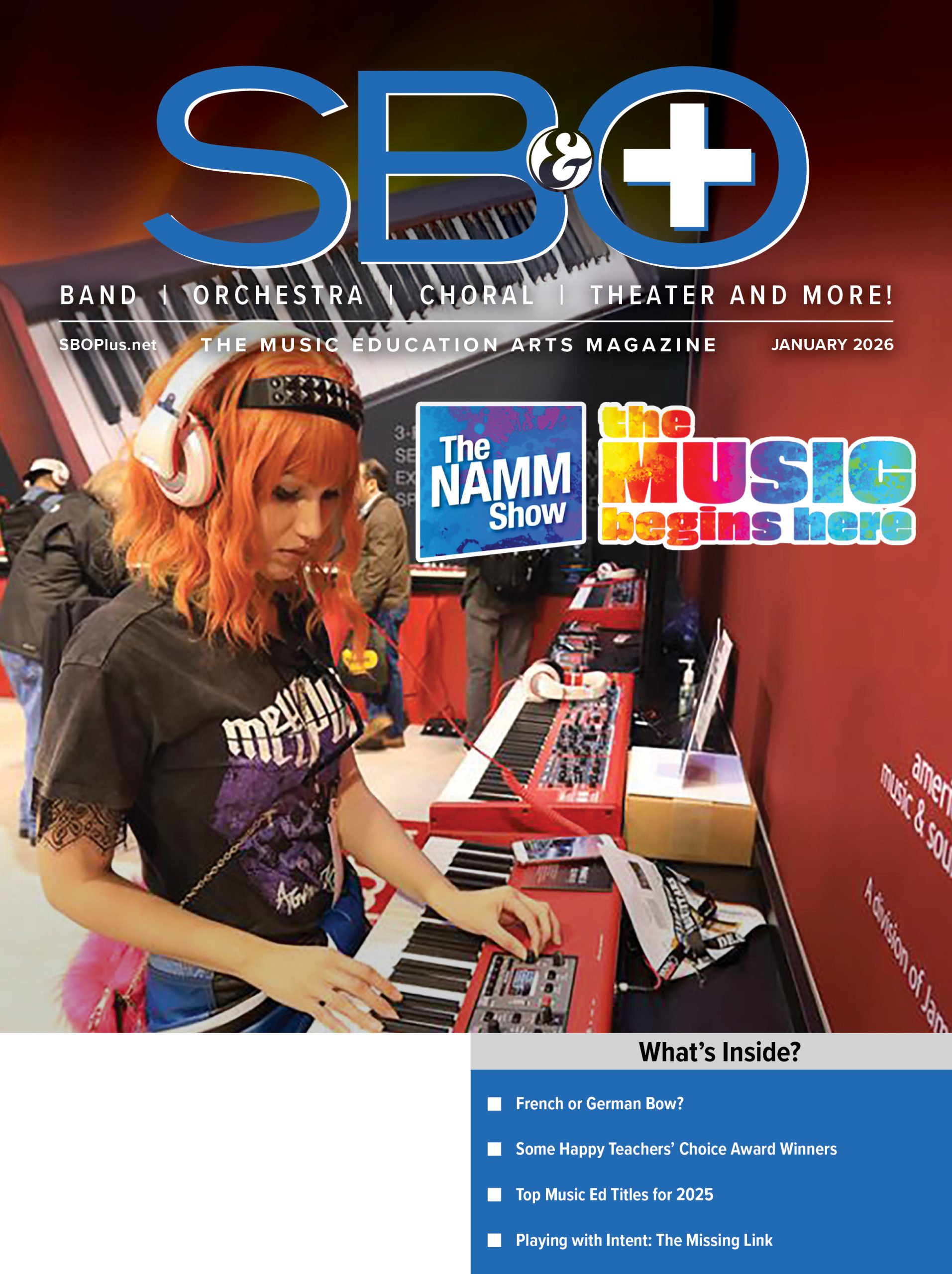By Patrick McGuire
From ChorTeach with permission from ACDA
What goes into making a “good” warm up? What are some tried-and-true exercises to help our groups get better? I asked vocal teachers across the region, and here’s what they had to say:
“Warm-ups are more than just preparing the voice to sing. Creating repertoire-influenced warm-ups can be a great way to reinforce melodic, rhythmic, and harmonic elements you are currently rehearsing.” —Brandon Hurley, Choir Teacher, Dawson-Boyd High School (Dawson, MN)
We can’t warm up for the sake of warming up. Our students need purpose-driven learning to stay engaged and make progress. When they can connect what they do in warm-ups to what they are singing in the rest of rehearsal, they synthesize the information presented to them and internalize it very effectively.
“SOVTs (semi-occluded vocal tract exercises) can include lip trills; exercises using nasal consonants [m], [n] [ŋ]; ‘blow fish’ (vocalising through a narrow opening of the lips, like a tight [u] shape; anything that occludes the vocal tract and therefore the air. Using SOVTs helps moderate breath flow, aligns the vocal folds, and allows the student to concentrate on other technical aspects like alignment and inhalation, [which] at the same time are effective and gentle vocalises for warming up, intermediate work, and cooling down.” —Dr. Holly Janz, Professor of Voice, Concordia College
This is a great nugget of wisdom! Intentional exercises like these lead to intentional progress. When we break it down and isolate techniques for our singers to practice, we help them cultivate more ownership of their instrument. Be sure to talk through this at a level appropriate to your ensemble to help them take ownership of the work they are doing too.
“I have some young students who need help waking up in the morning before they can output anything to me. If I get them up and moving it helps them when they come in sluggish. Stretching at the beginning of a rehearsal is a great way to get them started and help them focus. I especially like to count down starting from 8 and shake each arm and leg as the countdown goes; 8 on each arm, then each leg. Then we restart the countdown at 7, then 6, and so on until you get to 1 and everyone shakes their arms/legs once super-fast. I also like ‘Toxic Patterns’ as a warm-up game to get them engaged and listening. We use hand signs with solfege, and I tell them what the ‘toxic pattern’ is that they should avoid, and then we do call-and-response on various short solfége patterns. I throw in the toxic pattern, and they have to avoid singing it back to me. It’s a great way to get them engaged and listening. This activity also works when you have 5 minutes left of rehearsal and you need something to wrap it up or use it in the middle of rehearsal as a mini-brain break from the music you’re learning!” —Taylor Huwe, General Music, Prairie Elementary (Worthington, MN)
Physically engaging our singers is so important! Taylor works exclusively with K-2 students, some of the youngest among our school-age singers. The foundation that is being laid for them to be “whole body” singers will impact them forever. It is crucial to have good development for our youngest singers! All of us can benefit from a little more physical engagement as well, whether it’s helping your brain to process solfége syllables by adding a hand gesture or waking up your body and getting the blood flowing at the beginning of a rehearsal. It’s good for all of us!
“If I had to choose one exercise over any other (aside from breath preservation/SOVT onsets) it would be octave sirens. [u] or [i] to [a]. Sirens help to unify the voice with the body and show the singer the amount of breath pressure needed. Also, I have found that singers in this regional area tend to have difficulties singing a true legato, and this frees the voice up to create a smooth line. It really frees the sound!” —Robin Allebach, Director/Founder, Robin’s Nest Music Academy
So that makes two votes for SOVTs from two incredibly knowledgeable professionals. I think I’m going to do some research and prep more of those for my next rehearsal! I love the octave sirens as well. Not only do they have the benefits Robin lays out above, but most of my singers love doing them—they’re fun! One of the main reasons singers think they are fun is because they are very freeing for the voice, like Robin mentioned. We like to be free and open; so does our voice! By simply asking the question, “What’s a warmup or a guiding principal for your warmups that you like?” we have four great examples in this article. I love hearing what other people are doing for their groups to cultivate successful development. It gives you an opportunity to authentically integrate that success into your own program. There are so many great ideas out there to be shared in our community. Never hesitate to reach out or to share!
Patrick McGuire is the director of music at Sts. Anne & Joachim Catholic Church. He is also the content coordinator for the North Dakota ACDA publication, The Chorister where this article originally appeared.






























